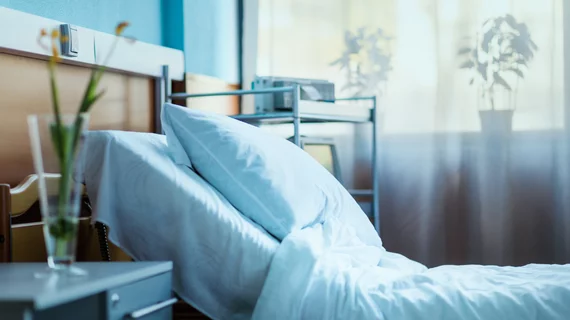Uncompensated care on the rise for hospitals
Hospitals provided about $12.8 million on average in uncompensated care in 2018, according to a new report from Definitive Healthcare. That’s up from $12.4 million in 2017, $12.1 million in 2016 and $11.2 million in 2015.
Uncompensated care is healthcare provided by hospitals or healthcare providers that isn’t reimbursed and can signal healthcare policy impacts around the U.S. In 2018, between 8.5% and 12.7% of the U.S. population was uninsured, the report cited. Higher rates of uncompensated care are an outcome of short-term insurance expansions, according to a 2018 prediction from the Urban Institute. The Trump administration expanded short-term limited duration health plans in 2018, extending them for longer periods of time. The plans do not offer comprehensive healthcare coverage and do not follow Affordable Care Act standards, such as providing coverage for pre-existing conditions.
Definitive Healthcare based the report on 3,855 U.S. hospitals that reported data each year from 2015 to 2018. The mean amount of hospital uncompensated care in 2018 was $5.2 million, an increase from $4.8 million in 2015.
Three hospitals had more than $224 million each in uncompensated care in 2018––Yale New Haven Hospital ($411 million), John Peter Smith Hospital ($309 million) and Methodist University Hospital ($225 million). These three hospitals also were among the top 10 hospitals for unreimbursed care in 2017.
Bigger hospitals also provided significantly more uncompensated care, with hospitals of more than 250 beds providing $39.7 million on average in 2018. By comparison, hospitals sized 101 to 250 beds had an average of $14.8 million, those 26 to 100 beds averaged $5.2 million and small hospitals of 25 beds of less averaged $2.1 million. The smallest hospitals saw a big increase in uncompensated care in 2018, however, jumping 8.5% from the previous year.
The Southeast has seen the largest annual average increases in uncompensated care from 2015 to 2018, at 6% per year. The Midwest had an average increase of 5.4% over that time period, followed by the Southwest (4.8%), the Northeast (4.3%) and the West (2.7%).
Integrated delivery network (IDN) hospitals and independent hospitals both saw increases in uncompensated care, but IDN owned had dollar amounts three times higher than independent hospitals. Independent hospitals are seeing unreimbursed care rise faster, up 6% from 2015 to 2018, while IDN own hospitals saw an increase of 4.6%.

